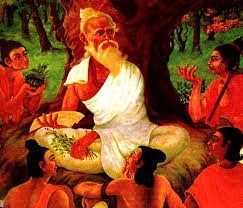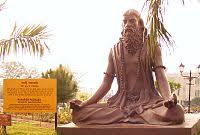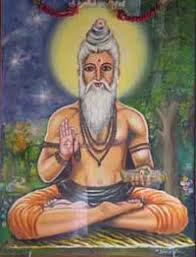Who was Patanjali?
The science of Yoga was developed in ancient India as an allied science of Ayurveda forhealing without medicine at the physical and mental level. The term Yoga has been derivedfrom the Sanskrit work Yoktra. Its literal meaning is “yoking the mind to the inner self afterdetaching it from the outer subjects of senses”. Like all other sciences, it has its roots in theVedas. It defines chitta i.e. dissolving thoughts, emotions and desires of a person’sconsciousness and achieving a state of equilibrium. It sets in to motion the force thatpurifies and uplifts the consciousness to divine realization. Yoga is physical as well asmental. Physical yoga is called Hathyoga. Generally, it aims at removing a disease andrestoring healthy condition to the body. Rajayoga is mental yoga. Its goal is self realizationand liberation from bondage by achieving physical mental, emotional and spritiual balance.Yoga was passed on by word of mouth from one sage to another. The credit of systematicallypresenting this great science goes to Patanjali. In the Yoga Sutras of Patanjali, Aum isspoken of as the symbol of God. He refers to Aum as a cosmic sound, continuouslyflowing through the ether, fully known only to the illuminated. Besides Yoga Sutras, Patanjalialso wrote a work on medicine and worked on Panini’s grammar known as Mahabhasaya
Whether the two works, the Yoga Sutras and the Mahābhāṣya, are by the same author has been the subject of considerable debate. The authorship of the two is first attributed to the same person in Bhojadeva's Rajamartanda, a relatively late (10th century) commentary on the Yoga Sutras,[50] as well as several subsequent texts. As for the texts themselves, the Yoga Sutra iii.44 cites a sutra as that from Patanjali by name, but this line itself is not from the Mahābhāṣya. This 10th-century legend of single-authorship is doubtful. The literary styles and contents of the Yogasūtras and the Mahābhāṣya are entirely different, and the only work on medicine attributed to Patañjali is lost. Sources of doubt include the lack of cross-references between the texts, and no mutual awareness of each other, unlike other cases of multiple works by (later) Sanskrit authors. Also, some elements in the Yoga Sutras may date from as late as the 4th century AD,[4] but such changes may be due to divergent authorship, or due to later additions which are not atypical in the oral tradition. Most scholars refer to both works as "by Patanjali", without meaning that they are by the same author. In addition to the Mahābhāṣya and Yoga Sūtras, the 11th-century commentary on Charaka by the Bengali scholar Cakrapāṇidatta, and the 16th-century text Patanjalicarita ascribes to Patañjali a medical text called the Carakapratisaṃskṛtaḥ (now lost) which is apparently a revision (pratisaṃskṛtaḥ) of the medical treatise by Caraka. While there is a short treatise on yoga in the medical work called the Carakasaṃhitā (by Caraka), towards the end of the chapter called śārīrasthāna, it is notable for not bearing much resemblance to the Yoga Sūtras, and in fact presents a form of eightfold yoga that is completely different from that laid out by Patañjali in the Yoga Sūtras and the commentary Yogasūtrabhāṣya.

The Yoga Sūtras of Patañjali are 196 Indian sutras (aphorisms) on Yoga. It was the most translated ancient Indian text in the medieval era, having been translated into about forty Indian languages and two non-Indian languages: Old Javanese and Arabic.[16] The text fell into obscurity for nearly 700 years from the 12th to 19th century, and made a comeback in late 19th century due to the efforts of Swami Vivekananda and others. It gained prominence again as a comeback classic in the 20th century.[51] Before the 20th century, history indicates the Indian yoga scene was dominated by other Yoga texts such as the Bhagavad Gita, Yoga Vasistha and Yoga Yajnavalkya.[52] Scholars consider the Yoga Sūtras of Patañjali formulations as one of the foundations of classical Yoga philosophy of Hinduism
